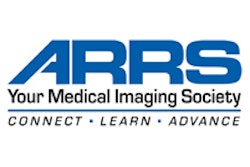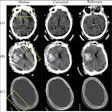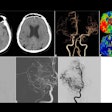
Radiologists have a responsibility to improve and ensure health equity for all patients, researchers wrote in a discussion piece published online January 12 in RadioGraphics.
In their discussion, a team led by Dr. Julia Goldberg from New York University Langone Health wrote about the longstanding effects and consequences of structural segregation from before the Civil Rights Act of 1964, and how radiologists serve as a central piece in striving for health equity.
"The provision of imaging screening, diagnostic tests, and interventions can be inclusive of radiology's diverse patient population and directly address Black healthcare disparities," they wrote.
Anti-Black segregation
Structural segregation and anti-Black racism can be seen throughout medical education, research, and the provision of health resources in U.S. history, according to the authors. These included such events as three Black students expelled from Harvard Medical School in 1850 after protests about their on-campus presence, the infamous Flexner Report that led to the closure of 71% (5 out of 7) of medical schools for Black students, the Mississippi Appendectomy, and the Tuskegee Syphilis Study among others.
The field of radiology is not immune to such infamous events in medical history. Early examples include radium being studied at university laboratories to lighten a Black person's skin color, and radiology researchers exploring the potential sterilization of "degenerates" and women with mental illnesses.
Black medical professionals meanwhile had difficulty obtaining membership into radiology societies in their earliest incarnations, including RSNA and the American Roentgen Ray Society. The National Medical Association (NMA) meanwhile was established in 1895 by Black physicians who were denied admission to the American Medical Association (AMA), where Black physician membership was limited to northern states in the 19th century.
Black pioneers in radiology
Despite the uphill cultural battle for Black radiology professionals, they still found ways to advance the field. Goldberg and colleagues noted the following achievements:
- Dr. Marcus Wheatland -- the first Black radiologist who started using x-rays in his Newport, RI practice; he had scholarly works featured in the American X-Ray Journal and JAMA.
- Dr. Rudolph Fisher -- the first Black radiologist to be a member of Phi Beta Kappa; he led the Black-owned International Hospital in Manhattan.
- Dr. William Edward Allen Jr. -- the first Black member certified by the American Board of Radiology in 1935; the first Black member of the American College of Radiology in 1940; the second known Black member of RSNA in 1948; scholarly works featured in Radiology and the American Journal of Roentgenology; the first Black member to receive the ACR Gold Medal Award.
Title VI of the Civil Rights Act of 1964 outlawed racial segregation in all federally funded programs while the Social Security Amendments of 1965 created Medicare and Medicaid. These legislative acts determined that anti-Black discrimination was unconstitutional and expanded protections for Black patient medical care and physician employment.
Lingering effects
Despite legislation paving the way for better patient care and professional advancement in radiology and other medical fields, the effects of anti-Black segregation prior to the Civil Rights Act linger, according to the authors.
For example, Black physicians make up 6.2% of medical school graduates. Also, 3.1% of diagnostic radiology residents are Black, as well as 2.1% of diagnostic radiology practicing physicians, and 2.0% of diagnostic radiology faculty,
In a 2019 survey of ACR members, 28% of physicians from marginalized racial groups reported "unfair or disrespectful treatment" because of their race. A 2019 study of letters of recommendation for radiology residency applicants showed that letter writers were less likely to use terms reflecting an individual's positive attributes for Black and Latinx applicants compared with white and Asian applicants.
Diversity promotion meanwhile remains a challenge, the authors noted. A 2020 study demonstrated that 54% of radiology professional society websites did not include diversity statements, while 46% did not have diversity initiatives.
What can radiologists do?
With radiologists being on the front lines of healthcare, the Goldberg team pointed out ways that professionals in the field can strive for better health equity, including targeted interventions and structural changes.
Examples of targeted interventions the researchers listed include expanding outreach efforts, spreading awareness of screening guidelines, and easing scheduling and transportation difficulties. Previous research suggests that patient navigators help with better adherence to screening guidelines.
On the structural level, the researchers wrote that reexamining imaging guidelines to accommodate for differences in cancer likelihood could help with better care in Black patients. Other actions they noted included expanded insurance coverage for CT colonography and linking certain Medicare quality measures to observed health disparities, incentivizing health equity work in radiology.
The team also recommended that newer artificial intelligence (AI) algorithms should implement anti-bias methodologies and that algorithms using race as a standalone factor should be disputed.
Along with that, clinical and academic workforces should work to be more diverse, the researchers wrote. They cited research that indicates more diverse workplaces lead to improved employee performance and innovative practices.
"Acknowledging the discriminatory history of radiology and striving to improve diversity and health equity will ultimately work to improve patient outcomes," Goldberg and colleagues wrote.




















